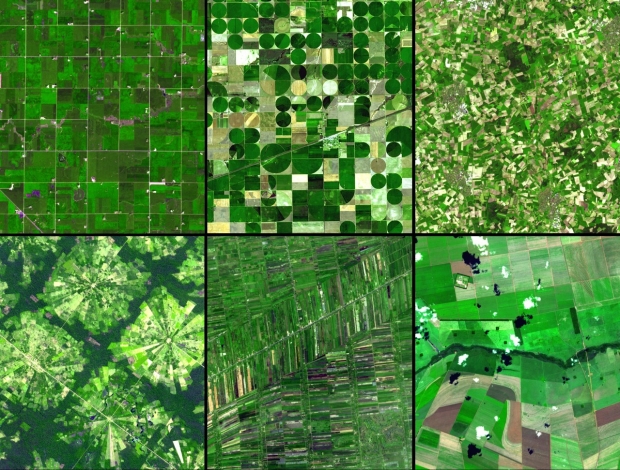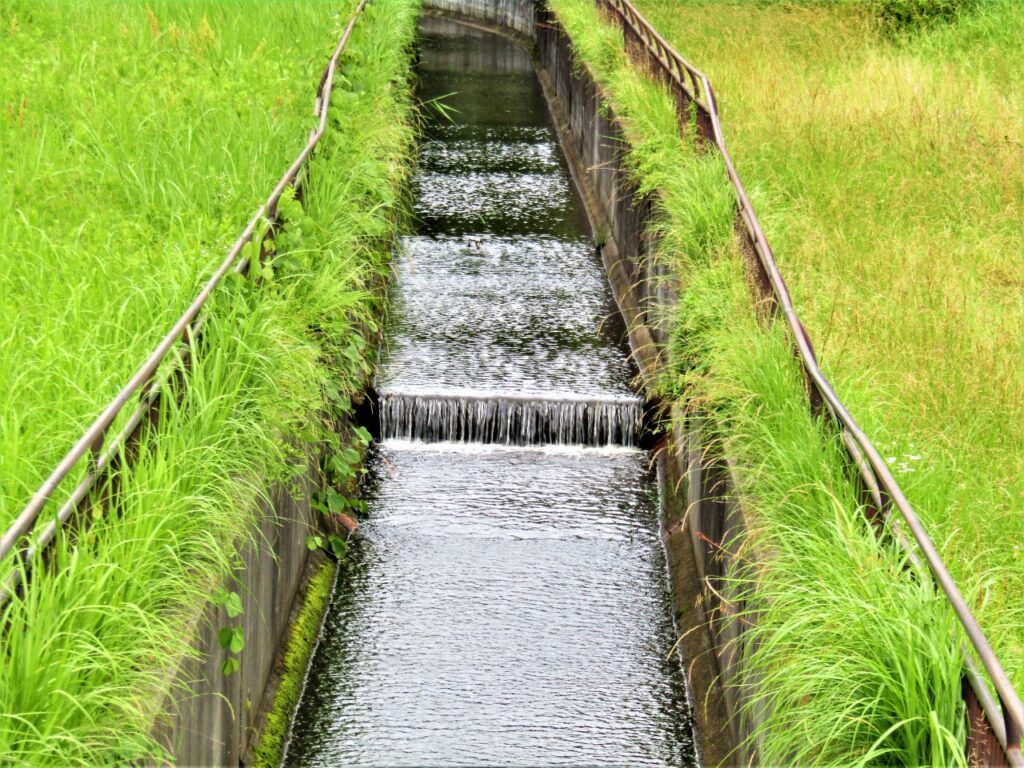Trajectory of Irrigation Water Use in Many Regions is Unsustainable, But Practice is Vital in Managing Climate Change and Future Agricultural Development, Researchers Conclude

Around the world, agricultural practices have developed as a function of topography, soil type, crop type, annual rainfall, and tradition. Featured above (clockwise from the upper left) are agricultural lands in Minnesota, Kansas, northwest Germany, southern Brazil, Bangkok, Thailand, and eastern Bolivia. Image courtesy of NASA/METI/AIST/Japan Space Systems, and U.S./Japan ASTER Science Team.
A new study by an international team of researchers shows how irrigation affects regional climates and environments around the world, illuminating how and where the practice is both untenable and beneficial.
The analysis, which appears in the journal Nature Reviews Earth and Environment, also points to ways to improve assessments in order to achieve sustainable water use and food production in the future.
“Irrigation helps us grow the food necessary to feed the world’s population, but it also changes Earth’s water and energy cycles in significant ways,” says Patricia Parker, ESSIC Assistant Research Scientist and co-author of the paper, “It’s important to understand these changes so that we can keep benefiting from irrigation while mitigating negative side effects.”
Irrigation, which is primarily used for agricultural purposes, accounts for roughly 70% of global freshwater extractions from lakes, rivers, and other sources, amounting to 90% of the world’s water usage. Previous estimates suggest that more than 3.6 million square kilometers —or just under 1.4 million square miles—of the earth’s land are currently irrigated. Several regions, including the US High Plains states, such as Kansas and Nebraska, California’s Central Valley, the Indo-Gangetic Basin spanning several South Asian countries, and northeastern China, are the world’s most extensively irrigated and also display among the strongest irrigation impacts on the climate and environment.
While work exists to document some impacts of irrigation on specific localities or regions, it’s been less clear if there are consistent and strong climate and environmental impacts across global irrigated areas—both now and in the future.
To address this, a total of 38 researchers from the US, Australia, Austria, Belgium, France, India, Italy, Japan, South Korea, and Taiwan analyzed more than 200 previous studies—an examination that captured both present-day effects and projected future impacts.

Their review pointed to both positive and negative effects of irrigation, including the following:
- Irrigation can cool daytime temperatures substantially and can also change how agroecosystems store and cycle carbon and nitrogen. While this cooling can help combat heat extremes, irrigation water can also humidify the atmosphere and can result in the release of greenhouse gasses, such as powerful methane from rice.
- The practice annually withdraws an estimated 2,700 cubic kilometers from freshwater sources, or nearly 648 cubic miles, which is more water than is held by Lake Erie and Lake Ontario combined. In many areas, this usage has reduced water supplies, particularly groundwater, and has also contributed to the runoff of agricultural inputs, such as fertilizers, into water supplies.
- Irrigation can also impact precipitation in some areas, depending on the locale, season, and prevailing winds.
The researchers also propose ways to improve irrigation modeling—changes that would result in methods to better assess ways to achieve sustainable water and food production into the future.
These largely center on adopting more rigorous testing of models as well as more and better ways of identifying and reducing uncertainties associated with both the physical and chemical climate processes and—importantly—human decision-making. The latter could be done with more coordination and communication between scientists and water stakeholders and decision-makers when developing irrigation models.
“Irrigation is a human activity that affects the land, atmosphere, water resources, weather, climate, and society, just to name a few things!” says Parker, “That’s why approaching this topic through an interdisciplinary lens is especially important.”
An image depicting different agricultural land-use practices may be downloaded here (Image courtesy of NASA/METI/AIST/Japan Space Systems and U.S./Japan ASTER Science Team).
This research was supported by the National Science Foundation (1752729, 2127643), the National Aeronautics and Space Administration(NASA), the National Research Foundation of Korea, and the Japan Science and Technology Agency.






